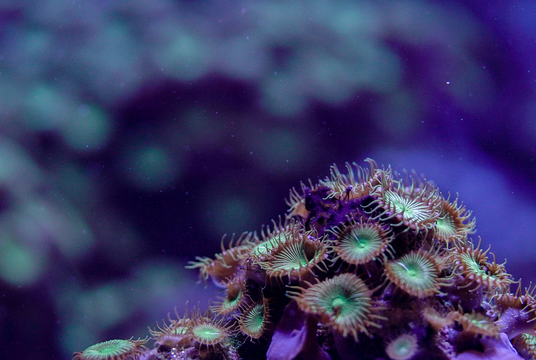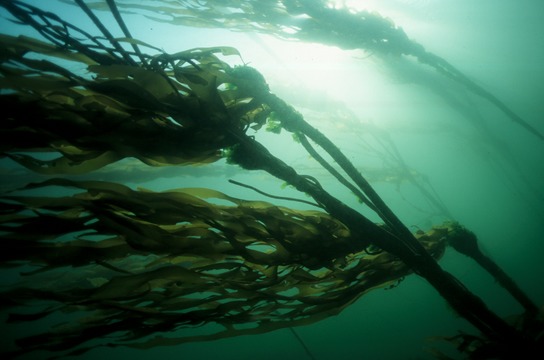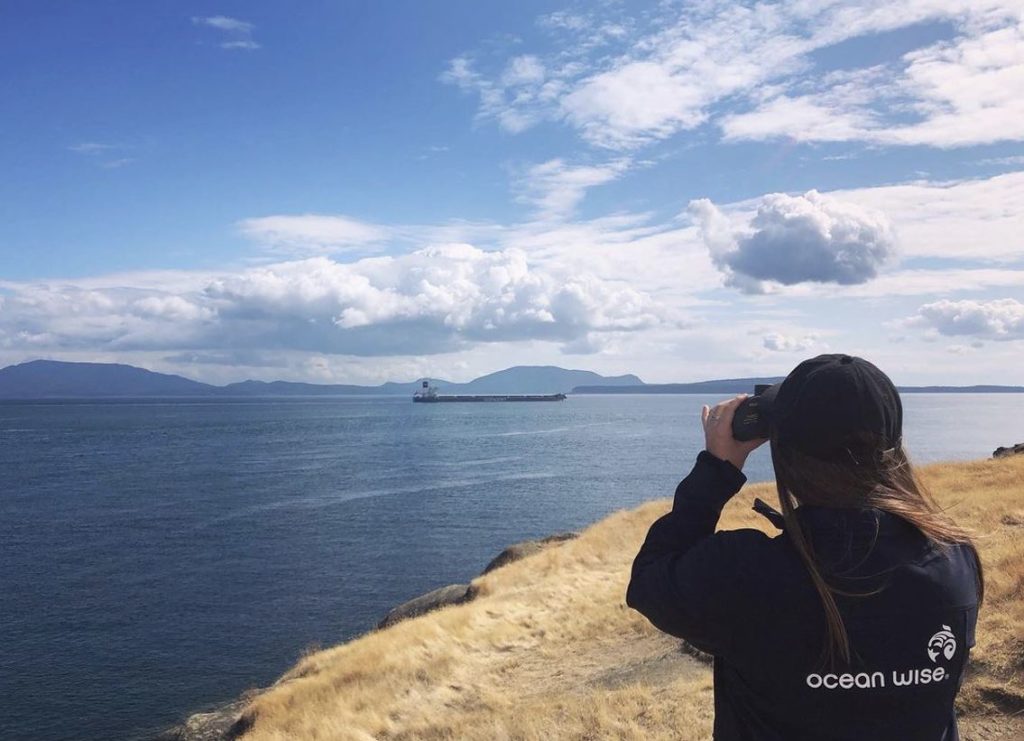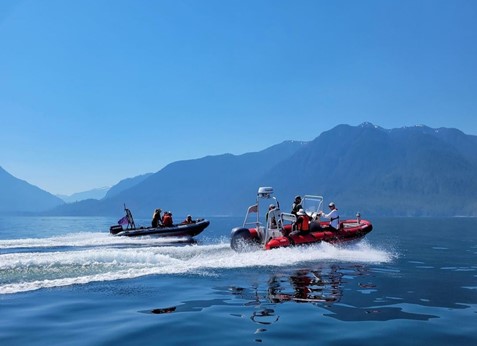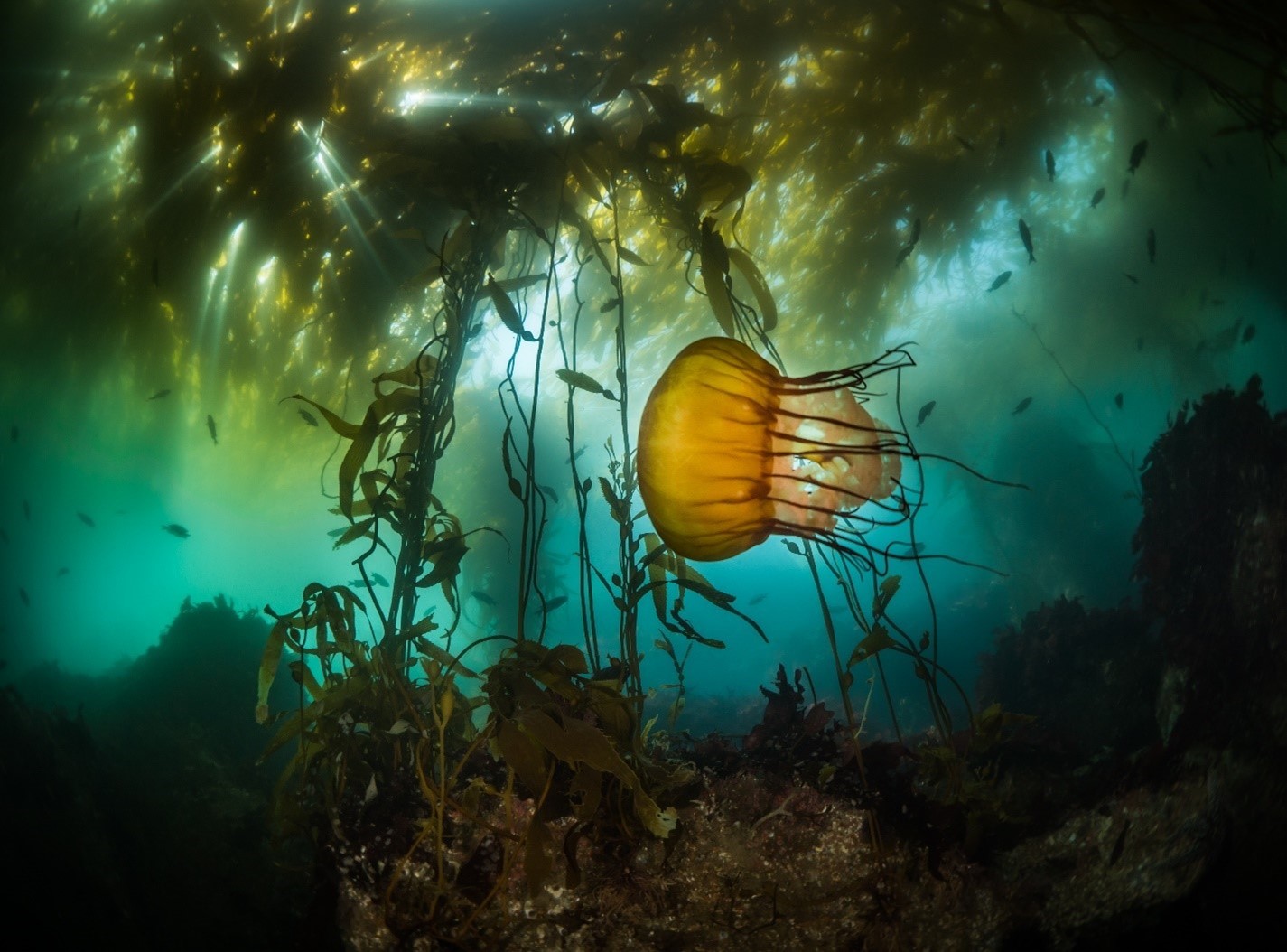
Seaweed: Nature’s Superhero Is Fighting Climate Change
By now, we’ve all heard that planting trees can help save the world. Trees draw down carbon, release oxygen into the atmosphere and build the foundations of biodiverse ecosystems – meaning that planting trees offers a promising climate solution on land! However, over 70% of the earth’s surface is covered by the ocean, leaving a huge amount of untapped real-estate.
To unlock this potential area, Ocean Wise and its partners are pursuing Seaforestation, the restoration, planting, management, and care of underwater seaweed forests.

Seaweeds are some of the fastest growing organisms on the planet, with species such as Giant Kelp growing up to 30cm per day in the ocean! Seaweeds photosynthesize – meaning they intake energy from the sun and carbon dioxide from the atmosphere, releasing oxygen back into their surroundings. Like trees, seaweed forests foster beautiful and diverse ecosystems that provide habitat, food, and oxygen to thousands of species like herring, sea otters, and sea lions. Towering kelp canopies can also help shelter animals from the effects of ocean acidification through increasing the pH of the surrounding waters.
So, seaweeds sound pretty amazing if you’re an ocean animal – but how can they benefit humans?
Seaweeds offer a powerful and scalable carbon drawdown solution that can sequester more carbon per square kilometer than forest ecosystems.
Most of the carbon dioxide that seaweeds absorb during photosynthesis is stored directly in their tissue. Some re-enters the carbon cycle when this tissue is eaten by animals or decomposes; however, a large portion of the carbon trapped in this tissue is transported away from coast by ocean currents as seaweed debris and dissolved carbon. A portion of this transported carbon becomes buried in marine sediment in the deep sea – removing it from the carbon cycle for thousands of years, which is known as carbon sequestration. It’s estimated that one square kilometer of properly managed seaweed forests could sequester over 1000 tons of CO2 every year!

Additionally, seaweed has been described as “Charismatic Carbon” by Froehlich et al. (2019) as it has many economic, ecological, and social benefits that go beyond its role in carbon sequestration.
The farming and restoring of seaweeds can create sustainable jobs that benefit Indigenous and other coastal communities and offer a nutritious food source that can play a huge role in global food security. Seaweed can be further used to make low-carbon products such as organic fertilizers, methane-reducing animal feed, bioplastics, textiles, alternative fuel sources, and the list goes on.
Ocean Wise is beginning to restore kelp forests in British Columbia and Chile by working with local institutions, Indigenous peoples, and companies to explore this slimy but charismatic solution.
Join us in planting seaweed in the oceans at scale this November 30, Giving Tuesday! Your $42 gift can help plant 100 kelp plants in the ocean to fight climate change. Donate now!
Posted November 5, 2021 by Ocean Wise
